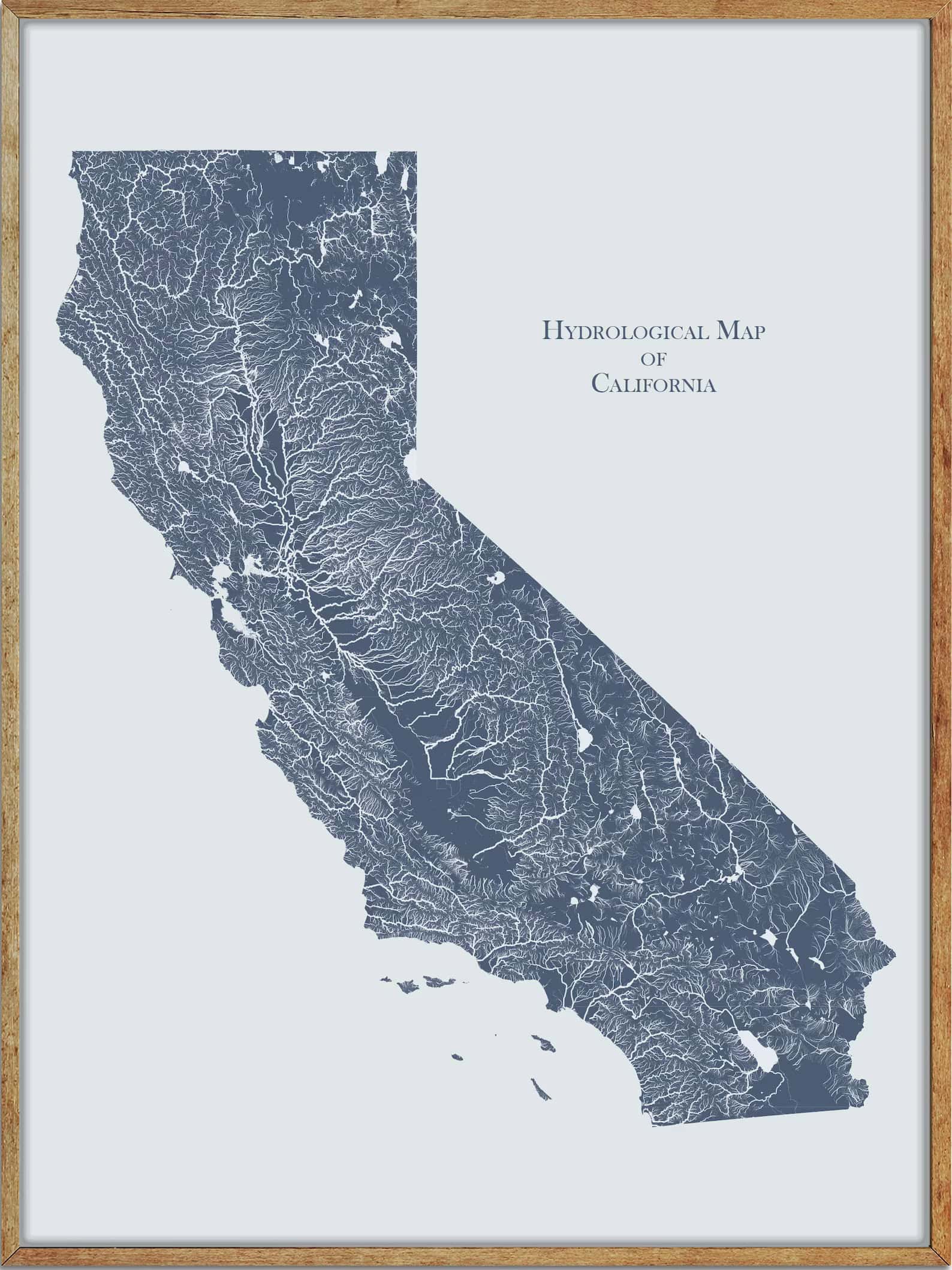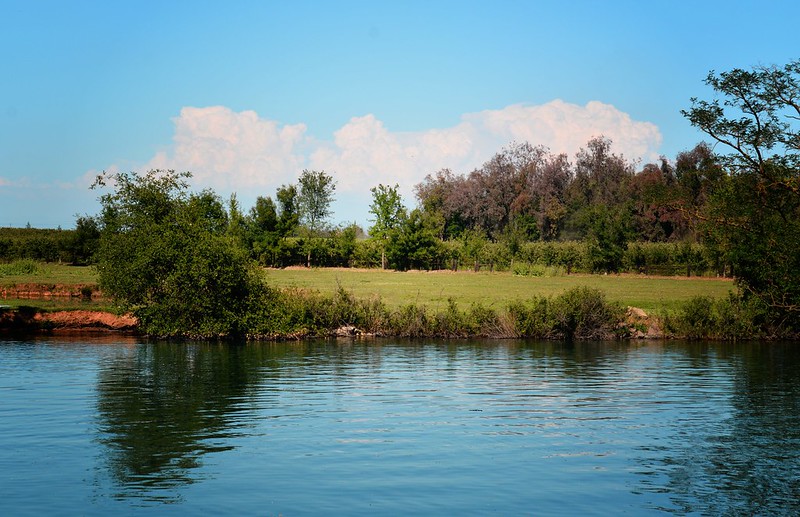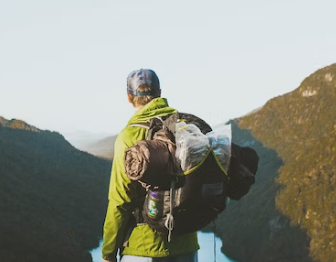From the sun-drenched coastlines to the towering peaks of its mountains, California’s diverse landscapes have long captured the imagination of explorers, artists, and dreamers alike.
Yet, amid the golden hues of its rolling hills and bustling urban centers, another symphony of beauty and life quietly unfolds – the intricate network of rivers and lakes that grace the state’s geography. These waterways, each with its own story to tell, have shaped the history, culture, and ecosystems of the Golden State.
Join us as we embark on a captivating journey, tracing the lyrical pathways of California’s rivers and uncovering the reflective depths of its lakes. In this article, we delve into the tapestry of aquatic wonders that have played an integral role in defining California’s identity, inviting you to explore the interconnectedness of land and water that makes this state a true natural treasure.
Printable California Lakes and Rivers Map

Rivers
Pit River

The Pit River is a major river in northeastern California that drains into the state’s Central Valley and is one of only three rivers in the U.S. that cross the Cascade Range, along with the Klamath and the Columbia.
The Pit River is the longest tributary of the Sacramento River, contributing as much as eighty percent of their combined water volume into the Shasta Lake reservoir, and is a popular destination for fishing, fly fishing, and rafting in its lower reaches, as well as being used to generate hydroelectricity and for irrigation and conservation purposes.
The river rises in several forks in Modoc, Lassen, and Shasta counties in the northeastern corner of California and flows through sparsely populated volcanic highlands, passing through a deep canyon northeast of Redding.
Eel River

The Eel River is a major river in northwestern California with a length of about 196 miles, and its watershed is the third largest entirely in California, draining a rugged area of 3,684 square miles in five counties.
The Eel River system is among the most dynamic in California, with highly variable discharge and the highest suspended sediment load of any river of its size in the United States, but it also supports abundant forests and historically, one of California’s major salmon and steelhead trout runs.
The river valley was a major rail transport corridor throughout the 20th century and was granted federal Wild and Scenic River status in 1981, but logging, grazing, road-building, and other human activities continue to significantly affect the watershed’s ecology.
Kern River

The Kern River is a 165-mile-long endangered, wild, and scenic river in California that drains an area of the southern Sierra Nevada mountains northeast of Bakersfield, and is fed by snowmelt near Mount Whitney. It passes through scenic canyons in the mountains and is a popular destination for whitewater rafting and kayaking, and is the southernmost major river system in the Sierra Nevada, and is the only major river in the Sierra that drains in a southerly direction.
The Kern River has been almost entirely diverted for irrigation, recharging aquifers, and the California Aqueduct since the late 19th century, although some water empties into Lake Webb and Lake Evans, two small lakes in a portion of the former Buena Vista Lakebed.
Owens River

The Owens River is a 183-mile-long river in eastern California that flows through the Owens Valley, an arid basin between the eastern slope of the Sierra Nevada and the western faces of the Inyo and White Mountains, and terminates at the endorheic Owens Lake south of Lone Pine, at the bottom of a 2,600 sq mi watershed.
In the early 1900s, the Owens River was the focus of the California Water Wars, fought between the city of Los Angeles and the inhabitants of Owens Valley over the construction of the Los Angeles Aqueduct. Since 1913, the Owens River has been diverted to Los Angeles, causing the ruin of the valley’s economy and the drying of Owens Lake.
Salinas River

The Salinas River is the longest river in the Central Coast region of California, running 175 miles and draining 4,160 square miles. It flows north-northwest and drains the Salinas Valley that slices through the central California Coast Ranges south of Monterey Bay.
The river is a wildlife corridor and provides the principal source of water from its reservoirs and tributaries for the farms and vineyards of the valley, eventually connecting with Monterey Bay, part of the Pacific Ocean, approximately 5 miles south of Moss Landing.
Klamath River

The Klamath River flows 257 miles through Oregon and northern California, emptying into the Pacific Ocean, and is the second-largest river in California by average discharge.
The river drains an extensive watershed of almost 16,000 square miles, stretching from the arid country of south-central Oregon to the temperate rainforest of the Pacific coast, and is known for its peculiar geography, with the upper basin used for farming and ranching, and the lower basin remaining wild, with much of it designated wilderness.
The Klamath River is a popular recreational river as well as an important source of water for agriculture, but dams and diversions in the upper basin have often caused water quality issues in the lower half of the river.
San Joaquin River

The San Joaquin River is the longest river in Central California, stretching 366 miles from the high Sierra Nevada to Suisun Bay, San Francisco Bay, and the Pacific Ocean. The river has been an important source of irrigation water as well as a wildlife corridor, but it is also among the most heavily dammed and diverted of California’s rivers.
Due to floods and engineering works, the fluctuating nature of the river was changed forever, and the river is subject to tremendous water supply, navigation, and regulation works by various federal agencies, which have dramatically reduced the flow of the river since the 20th century.
Sacramento River

The Sacramento River is the largest river in California, flowing for 400 miles from the Klamath Mountains to the Sacramento–San Joaquin River Delta and San Francisco Bay. The river has been an important source of trade and travel for thousands of years, and its watershed has been inhabited by hundreds of tribes for about 12,000 years.
However, intensive agriculture and mining in the 19th century contributed to pollution in the Sacramento River, and large dams and water projects since the 1950s have greatly modified the river from its natural state and caused the decline of its once-abundant fisheries.
Kings River

The Kings River is a 132.9-mile river draining the Sierra Nevada mountain range in central California, flowing from Kings Canyon National Park to the San Joaquin Valley. The river was once inhabited by the Yokuts and other native groups and fed a vast network of seasonal wetlands around Tulare Lake that supported millions of waterfowl, fish, and game animals.
Today, the river irrigates about 1.1 million acres of some of the most productive farmland in the country and is also used extensively for hydropower generation and recreation.
Stanislaus River

The Stanislaus River is a 96-mile tributary of the San Joaquin River in north-central California, originating as three forks in the high Sierra Nevada and flowing southwest through the agricultural San Joaquin Valley to join the San Joaquin south of Manteca. The river was explored by the Spanish in the early 1800s and named for Estanislao, who led a native uprising in Mexican-controlled California in 1828.
Today, the Stanislaus River is known for its swift rapids and scenic canyons in the upper reaches and is heavily used for irrigation, hydroelectricity, and domestic water supply, although water rights are a controversial topic.
Mokelumne River

The Mokelumne River is a 95-mile river in northern California, flowing from the central Sierra Nevada into the Central Valley and ultimately the Sacramento–San Joaquin River Delta, where it empties into the San Joaquin River-Stockton Deepwater Shipping Channel.
The river is colloquially divided into the Upper and Lower Mokelumne Rivers, and together with its main tributary, the Cosumnes River, the Mokelumne drains 2,143 square miles in parts of five California counties. The river is named after the Plains Miwok people, with “moke” meaning fishnet and “-umne” meaning “people of”.
Feather River

The Feather River is the principal tributary of the Sacramento River, flowing for about 73 miles from Lake Oroville in the Sierra Nevada. Its four long tributary forks join in Lake Oroville—the South Fork, Middle Fork, North Fork, and West Branch Feather Rivers.
The Feather River and its forks were a center of gold mining during the 19th century and have since provided water to central and southern California, as well as hydroelectricity generation. The river is unique in that two of its tributaries, the East Branch and Middle Fork, originate east of the Sierra Nevada in the Diamond Mountains and breach the crest of the Sierra as they flow west.
Amargosa River
The Amargosa River is an intermittent waterway that flows for 185 miles from the Amargosa Valley in the Amargosa Desert northwest of Las Vegas, through southern Nevada and eastern California, and finally into Death Valley where it disappears into the ground aquifer.
The river flows above ground only after a rare rainstorm washes the region, and is protected as a National Wild and Scenic River between Shoshone and Dumont Dunes. The Amargosa River Natural Area at the south end of Tecopa Valley also protects the river’s habitat.
Lakes
Lake Tahoe

Lake Tahoe is a freshwater lake straddling the border between California and Nevada, known for its clarity of water and surrounded by panoramic views of mountains on all sides. It is the largest alpine lake in North America and the second deepest in the United States after Crater Lake in Oregon.
The area surrounding the lake is a major tourist attraction, offering winter sports, summer outdoor recreation, and scenery enjoyed throughout the year, and is also home to snow and ski resorts that are a significant part of the area’s economy and reputation.
Goose Lake
Goose Lake is a large alkaline lake on the Oregon-California border, formed from precipitation and melting glaciers during the Pleistocene epoch. Its watershed is normally endorheic but sometimes flows into the Pit River during periods of high water following heavy rainfall or snowmelt.
The north portion of the lake is in Lake County, Oregon, and the south portion is in Modoc County, California, with the mountains at the north end of the lake part of the Fremont National Forest and the south end adjacent to Modoc National Forest lands.
Trinity Lake

Trinity Lake, previously called Clair Engle Lake, is a reservoir on the Trinity River in Trinity County, California, with a capacity of 2,447,650 acre⋅ft, making it one of the largest reservoirs in California.
The lake’s surface is 2,370 ft above MSL and captures and stores water for the Central Valley Project, which provides the Central Valley with water for irrigation and produces hydroelectric power. The lake is serviced by three marinas and is known for its many small arms, glassy inlets, and good water-skiing conditions.
Clear Lake

Clear Lake is the largest natural freshwater lake wholly within the state of California, with 68 square miles of surface area and an age of 2.5 million years, making it the oldest lake in North America.
It supports large populations of fish, including largemouth bass, crappie, bluegill, carp, and catfish, and is home to abundant wildlife such as ducks, pelicans, grebes, blue herons, egrets, osprey, bald eagles, deer, bear, mountain lion, raccoon, and other animals. The expansive, warm water of Clear Lake makes it popular for watersports, including swimming, water skiing, wakeboarding, sailing, boat races, and jet skiing.
Lake Oroville

Lake Oroville is a reservoir formed by the Oroville Dam impounding the Feather River, located in Butte County, northern California. The lake is treated as a keystone facility within the California State Water Project, providing flood control, recreation, and freshwater releases to assist in controlling the salinity intrusion into the Sacramento-San Joaquin Delta, and protecting fish and wildlife.
Lake Oroville is also a popular nationally renowned bass fishing location, with coho salmon stocked from the Feather River Fish Hatchery, a main component of the lake.
Lake Berryessa

Lake Berryessa is the largest lake in Napa County, California, formed following the construction of the Monticello Dam on Putah Creek in the 1950s. The reservoir provides water and hydroelectricity to the North Bay region of the San Francisco Bay Area and has over 20,000 acres of surface area, approximately 165 miles of shoreline, and is approximately 16 miles long and 3.1 miles wide.
Near the dam on the southeast side of the reservoir is the Glory Hole, an open bell-mouth spillway with a maximum capacity of 48,000 cfs, which operates when there is excess water in the reservoir.
Mono Lake

Mono Lake is a saline soda lake in Mono County, California, formed at least 760,000 years ago as a terminal lake in an endorheic basin. The lake’s lack of an outlet causes high levels of salts to accumulate in the water, making it alkaline. Despite this, the lake has an unusually productive ecosystem based on brine shrimp, which thrive in its waters, and provides critical habitat for two million annual migratory birds that feed on the shrimp and alkali flies.
The Mono Lake Committee was formed in response to the lowering of the lake level by the diversion of water from freshwater streams flowing into the lake by the city of Los Angeles, and won a legal battle that forced Los Angeles to partially replenish the lake level.
Lake Havasu

Lake Havasu is a large reservoir formed by Parker Dam on the Colorado River, on the border between San Bernardino County, California, and Mohave County, Arizona. The concrete arch dam was built by the United States Bureau of Reclamation between 1934 and 1938, and the lake’s primary purpose is to store water for pumping into two aqueducts.
The lake was named after the Mojave word for blue and was home to the Mojave people before the dam construction. Lake Havasu City sits on the Arizonan side of the lake with its Californian counterpart of Havasu Lake directly across the lake.
Owens Lake
Owens Lake is a mostly dry lake located in the Owens Valley on the eastern side of the Sierra Nevada in Inyo County, California, about 5 miles south of Lone Pine. Owens Lake held significant water until 1913 when much of the Owens River was diverted into the Los Angeles Aqueduct, causing Owens Lake to desiccate by 1926.
Despite a 2004 court order requiring the LADWP to reestablish a small flow from the river into the lake, as of 2013, Owens Lake is the largest single source of dust pollution in the United States.
Honey Lake
Honey Lake is an endorheic sink located in the Honey Lake Valley in northeastern California, near the Nevada border. In most years, the lake dries almost completely due to summer evaporation, reducing the lake to a lower level of 12 square kilometers and creating an alkali flat.
Despite this, Honey Lake offers recreational activities such as bird watching, picnicking, hiking, camping, warm-water fishing, and waterfowl hunting, and is part of the Honey-Eagle Lakes watershed of 2,770 sq mi, which includes the Honey Lake Basin of 2,201 sq mi.
Lake Almanor

Lake Almanor is a large reservoir located in northwestern Plumas County, northeastern California, with a capacity of 1,308,000 acre-feet and a maximum depth of about 90 feet. The reservoir is formed by Canyon Dam on the North Fork of the Feather River, as well as Benner and Last Chance Creeks, Hamilton Branch, and various natural springs.
Alkali Lakes
The Alkali Lakes, located in the Surprise Valley of northeastern California, are a series of three large playas known as Upper, Middle, and Lower Alkali Lakes. The lakes lie at the bottom of a graben created by the Surprise Valley Fault and are a remnant of Glacial Lake Lahontan, which existed up until about 12,000 years ago.
The area has been used for agriculture since the 1840s, and salt was extracted from briny wells on the east side of Middle Alkali Lake until 1943.
Buena Vista Lake
Buena Vista Lake, located in the Tulare Lake Basin in the southern San Joaquin Valley, California, was the second largest of several similar lakes in the area and was fed by the waters of the Kern River. The lake overflowed into Kern Lake, making one large lake, which then overflowed into the Buena Vista Slough and Kern River channel and into Tulare Lake.
Today, Lake Webb and Lake Evans occupy the lakebed on the northern shore of the former Buena Vista Lake. In June 2023, with a 300% snowpack in the Southern Sierra Mountains, the Kern River started to fill the top section of Lake Buena Vista to a depth of only a few feet.

